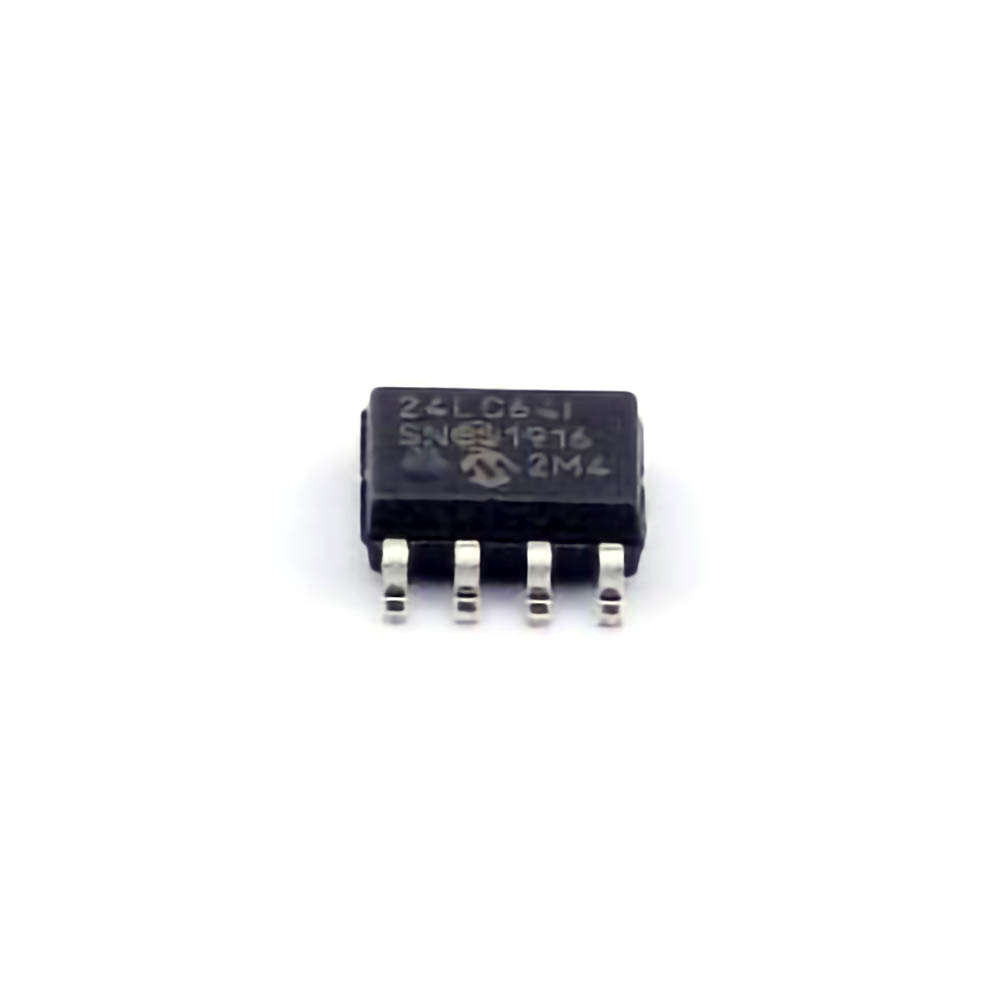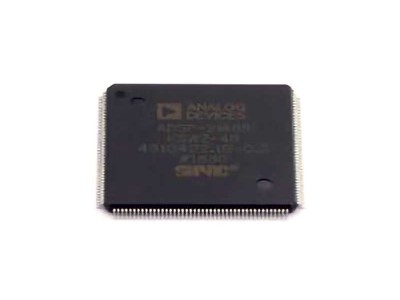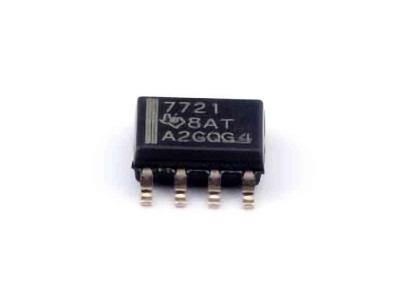
In today's rapidly advancing world of electronics, data storage is an essential component of countless devices. Among the various storage solutions available, EEPROM chips like the 24LC64T-I/SN offer a reliable, compact, and Power -efficient option for small-scale data storage. This article delves into the applications, features, and programming examples of the 24LC64T-I/SN, demonstrating how it can be used in a variety of Embedded systems and electronic Modules .
24LC64T-I/SN, EEPROM, small data storage, embedded systems, Memory chips, data storage module , programming example, I2C Communication , non-volatile memory.
Introduction to 24LC64T-I/SN and Its Applications
The 24LC64T-I/SN is a 64K-bit (8K x 8) Electrical ly Erasable Programmable Read-Only Memory (EEPROM) chip manufactured by Microchip Technology. It operates on the I2C (Inter-Integrated Circuit) communication protocol, which makes it a highly efficient solution for embedded systems and small-scale data storage Modules . EEPROMs like the 24LC64T-I/SN are crucial in applications that require persistent storage of data even after power is removed, as they retain their stored data without needing a continuous power supply.
Key Features of the 24LC64T-I/SN
The 24LC64T-I/SN comes with several notable features that make it a standout in the field of small data storage modules:
64K-bit Storage Capacity
The 24LC64T-I/SN offers 64K bits of storage, organized in 8K words of 8 bits each. This makes it suitable for storing small amounts of configuration data, parameters, or settings in embedded systems.
I2C Communication
Utilizing the I2C protocol, this EEPROM allows multiple devices to communicate using only two wires (SCL for the Clock and SDA for the data), which reduces wiring complexity and saves space on the PCB. The device supports both 100 kHz and 400 kHz communication speeds, ensuring fast data transfer.
Low Power Consumption
As a low-power device, the 24LC64T-I/SN is ideal for battery-powered applications. It requires minimal current during read and write operations, and even in standby mode, it consumes a mere 1 µA, extending the battery life of devices.
Non-Volatile Memory
The 24LC64T-I/SN retains its data even when the power is turned off. This is particularly useful for storing configuration settings, calibration data, and other parameters that need to be preserved between power cycles.
Write Protection
The chip features built-in write protection, which can be enabled or disabled via the WP pin. This feature is particularly useful in scenarios where accidental overwriting of critical data must be avoided.
Endurance and Reliability
The EEPROM is designed for long-term reliability, with an endurance of up to 1 million write cycles. This makes it suitable for applications that require frequent updates to the stored data.
Applications of 24LC64T-I/SN
The 24LC64T-I/SN is versatile and can be used in a wide range of applications where small amounts of non-volatile data need to be stored. Some of the most common use cases include:
1. Microcontroller and Embedded Systems
In embedded systems, microcontrollers often require external memory to store configuration data, user settings, or calibration parameters. The 24LC64T-I/SN offers a convenient and cost-effective solution. For example, in an IoT (Internet of Things) sensor node, the EEPROM can store device settings, sensor calibration values, and even unique device identifiers.
2. Data Logging
In applications like data logging and measurement, the EEPROM is used to store logged data over time. For instance, in a temperature monitoring system, sensor readings can be periodically written to the 24LC64T-I/SN, ensuring that the data is retained even when the system is powered off or reset.
3. Configuration Storage
Many electronic devices need to store user configuration settings, preferences, or system parameters. The 24LC64T-I/SN serves as an ideal choice for this purpose. For instance, in consumer electronics, such as programmable thermostats or remote controls, the EEPROM chip can store user preferences that remain intact even when the device is powered off.
4. Firmware Storage
For some embedded systems, the EEPROM can be used to store small chunks of firmware that may need to be updated occasionally. This can be particularly useful in systems where firmware updates are not done frequently but need to be retained during power cycles.
5. Calibration and Device Identity
Another important use case for the 24LC64T-I/SN is storing device-specific data such as calibration coefficients or unique serial numbers. This is especially useful in high-precision instruments where calibration data must be preserved and associated with a particular unit.
6. Security Applications
In security systems, the EEPROM can store sensitive data like encryption keys, passwords, or authentication tokens. As it is non-volatile, the data is retained even if the system loses power, ensuring security information is not lost.
Programming the 24LC64T-I/SN in Small Data Storage Modules
The 24LC64T-I/SN can be easily interface d with a microcontroller via the I2C protocol. Programming the EEPROM typically involves using the I2C commands to read from and write to specific memory locations. Below is an overview of how to program the 24LC64T-I/SN in small data storage modules using I2C.
1. Hardware Setup and Wiring
The 24LC64T-I/SN uses the I2C bus for communication, requiring only two lines: the Serial Data (SDA) line and the Serial Clock (SCL) line. Additionally, the device has two address pins (A0 and A1) that allow for multiple devices to share the same I2C bus. The typical connection for the 24LC64T-I/SN to a microcontroller involves:
SDA (Serial Data): This pin is used to send and receive data between the EEPROM and the microcontroller.
SCL (Serial Clock): This pin is used to clock the data transfer.
WP (Write Protect): This pin can be used to enable or disable write protection on the EEPROM. It is usually connected to ground to enable writing.
Vcc and GND: Power supply pins, typically 3.3V or 5V depending on the system's voltage level.
A0 and A1: Address pins, which allow the connection of multiple EEPROM devices on the same I2C bus.
For simplicity, the wiring example uses a microcontroller like the Arduino, but similar steps can be applied to other microcontrollers.
2. I2C Protocol Basics
Before diving into programming, it's essential to understand the basics of the I2C protocol:
Start Condition: Initiates communication.
Device Address: The 7-bit address of the 24LC64T-I/SN (typically 0x50 for this device).
Read and Write Operations: I2C supports both read and write operations, allowing for bidirectional data transfer.
Stop Condition: Ends the communication.
3. Example Code for Programming the 24LC64T-I/SN
Here’s an example of how you can use an Arduino to write and read data from the 24LC64T-I/SN:
#include
#define EEPROM_ADDR 0x50 // 7-bit I2C address for 24LC64T-I/SN
void setup() {
Wire.begin(); // Initialize I2C communication
Serial.begin(9600); // Start serial communication for debugging
// Writing to EEPROM
byte data = 0xAB; // Example data to store
int address = 0x0000; // Starting address in EEPROM
writeEEPROM(address, data);
// Reading from EEPROM
byte readData = readEEPROM(address);
Serial.print("Read data: ");
Serial.println(readData, HEX); // Print the read data
}
void loop() {
// Empty loop, only needed for setup and testing
}
// Function to write data to EEPROM
void writeEEPROM(int addr, byte data) {
Wire.beginTransmission(EEPROM_ADDR);
Wire.write((int)(addr >> 8)); // High byte of the address
Wire.write((int)(addr & 0xFF)); // Low byte of the address
Wire.write(data); // Data to write
Wire.endTransmission();
delay(5); // Wait for EEPROM write cycle to complete
}
// Function to read data from EEPROM
byte readEEPROM(int addr) {
byte receivedData = 0;
Wire.beginTransmission(EEPROM_ADDR);
Wire.write((int)(addr >> 8)); // High byte of the address
Wire.write((int)(addr & 0xFF)); // Low byte of the address
Wire.endTransmission();
Wire.requestFrom(EEPROM_ADDR, 1); // Request 1 byte from EEPROM
if (Wire.available()) {
receivedData = Wire.read(); // Read the data byte
}
return receivedData;
}
4. Writing and Reading Data
In this example, the Arduino is used to communicate with the 24LC64T-I/SN over the I2C bus. The writeEEPROM function sends a 16-bit memory address (composed of the high and low bytes) and the data byte to the EEPROM, while the readEEPROM function retrieves the data stored at a specific memory address.
5. Practical Considerations
When using the 24LC64T-I/SN in real-world applications, keep in mind the following considerations:
Write Cycle Time: EEPROM chips like the 24LC64T-I/SN have a write cycle time of around 5 milliseconds. Therefore, during write operations, the system should wait for the EEPROM to finish writing before initiating another write or read operation.
Power Failure: To ensure data integrity, consider implementing power-fail detection in your system to manage data storage effectively.
The 24LC64T-I/SN provides a simple yet powerful solution for adding small, non-volatile data storage to embedded systems. With its I2C interface and low power consumption, it is ideal for a wide range of applications, from device configuration storage to data logging. The practical example provided illustrates how easy it is to integrate this EEPROM into your own projects, making it a valuable tool in the design of modern electronic systems.
If you are looking for more information on commonly used Electronic Components Models or about Electronic Components Product Catalog datasheets, compile all purchasing and CAD information into one place.


